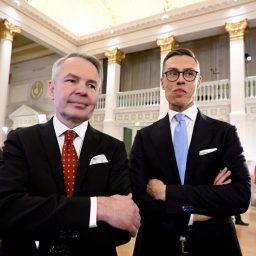Latest Trends Report on Inflation and Monetary Policy

Photo: Unsplash.com
Recent data showing a sharp fall in inflation in advanced economies, notably the US and Europe, has raised expectations of a shift in monetary policy. This trend raises concerns about the uncertain economic outlook and the urgency of monetary policy adjustments. In the United States, the latest data showed that, excluding food and energy prices, the core personal consumption expenditures (PCE) price index rose 3.5% in October, the smallest increase since April 2021. This suggests that inflation is falling significantly, bringing forward market expectations of a shift in monetary policy. Meanwhile, the market is pricing in a 47 percent chance of a cumulative 25 basis point cut by May, according to CME’s FedWatch. This further reinforced market expectations of monetary policy easing. In Europe, eurozone inflation was 2.4 percent on an annual basis in November, down from 2.9 percent in October and the lowest level in more than two years. The ECB is likely to cut interest rates by 25 basis points by April next year, and the market even thinks March is more likely.
The trend has prompted a re-examination of central bank strategies in the world’s advanced economies. The Wall Street Journal reported that inflation is falling faster than expected, marking a possible change in the way central banks deal with inflation. Some economists noted that the fall in inflation has increased market concerns that the central bank is tightening policy too soon and could lead to an early cut in interest rates, which is also linked to higher borrowing costs in the market. Moreover, the slowdown in inflation has been accompanied by a slowdown in the pace of job growth and a rise in unemployment. This has created uncertainty about the economic outlook and held back wage growth. Economists point out that rising interest rates make saving more attractive, making households less motivated to spend, which puts some pressure on future economic growth. In the United States, consumer spending growth slowed in October, falling sharply to 0.2% from 0.7% in September. Economists say slowing income growth, high interest rates and prices, falling savings, and student loan payments are among the factors that have crimped Americans’ ability to maintain high levels of spending. In this context, the real estate industry is also attracting attention. Although the 30-year fixed mortgage rate fell back to 7.3 percent, home sales continued to fall, adding to concerns about the economic recovery. Overall, the trend of falling inflation in advanced economies has led to speculation about a shift in monetary policy. Central banks around the world need to carefully address the challenges posed by slowing inflation as they adjust their policies to promote stable and sustainable growth.
By Jiashun Tang
















